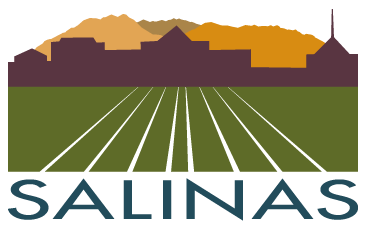1950 - 1959
Salinas, the brash town that eclipsed the earlier settlement of Natividad by luring in the railroad, incorporating, and winning the right to be the county seat, all in the 1870’s, was still growing eighty years later. Between 1950 and 1956 the council began a long series of annexations that brought 43 separate additions to the city, doubling the area. The additions were made on all sides of the city. Home construction was on the rise, and the population went from 13,917 in 1950 to 18,957 in 1960.
On the downside, the widespread use of vacuum cooling and refrigerated railroad cars by the agricultural industry put hundreds of packing shed workers out of work, though eventually many would find employment at Salinas Valley Memorial Hospital as well as in other industries new to the area.
The drive to build a bigger, better-equipped, non-profit community hospital in Salinas began with a group of doctors that met at the Jeffrey Hotel in 1941. At that time there were two private hospitals in Salinas, Dr. Rollin Reeves’ Salinas Valley Hospital at Monterey and San Luis Streets, and the Park Lane, owned by Dr. Murphy. The Monterey County Hospital then only served indigent patients. In any case, patients needing serious surgery were usually sent to San Francisco or San Jose.
Building the hospital took time and dedicated community effort. Residents joined area leaders to vote for a hospital district, raise money, and pass two bonds to get the hospital built. The project was on hold during World War II and later slowed by weather conditions as well as cost increases that were partly a result of the onset of the Korean War. But committed residents and city leaders like Bruce Church, L.W. Joe Wing, William L. Steward, Fred Rianda and Andrew H. Christensen persevered in helping to build the hospital.
The State of California enabling act of 1947 allowed the formation of a taxation district for the hospital. Funds were still not sufficient to build an adequate hospital so a bond issue was developed in 1949. A supplemental bond issue was found to be necessary and the Salinas Junior Chamber of Commerce was active in passage of the second request for a supplemental $500,000.
Groundbreaking to dedication took three years. On November 27, 1950 Roy L. Diaz, a staff sergeant with Company C of the 194th Tank Battalion and former prisoner of war, turned the first shovel of dirt for the hospital named as a memorial to those who served in World War II. The hospital was dedicated on Sunday, March 30, 1953 in the presence of more than 2,000 valley residents. [History of Salinas Valley Memorial Hospital, Theodore D. Englehorn, SR., M.D., F.I.C.S., 1993] In 2009 the Salinas Valley Chamber of Commerce would rate the Salinas Valley Memorial Healthcare System as the sixth largest employer in the Salinas area with 2,200 employees.
Dr. Garth Parker, celebrating his fiftieth year in the medical profession, spoke at the dedication, tracing the history of hospitals in the area. The first private hospital was in Castroville, followed by the Salinas Valley Sanitarium, which had operating and delivery rooms, unlike the hospital in Castroville. Later came the Jim Bardin Hospital, the Park Lane, and the Salinas Valley Hospital.
Jobs also came to the area through the efforts of the Monterey County Industrial Development, Inc., better known as the MCID, which received its charter of incorporation from the State of California on December 10, 1951. Its purpose was to bring industrial development and jobs to the Monterey County area. Much of that development would be in and around the city of Salinas. Between 1954 and 1958 a number of businesses opened providing jobs for residents, The St. Regis Paper Company and Cochran Equipment opened in Salinas in 1954. Kuhlman Electric opened in 1955. Universal Match Corporation in Prunedale and Wilder Manufacturing both opened in 1957. Streater Industries, Growers Frozen Food and J.M. Smucker all opened in 1958.
As the Carmel Pacific Spectator Journal of 1955 noted, Salinas was truly a “city in a hurry.” Already at the center of Salinas Valley agriculture, the city’s new Valley Center shopping hub and the Sherwood Gardens center which opened in 1956 made Salinas the major merchandising center for the Valley and the nearby Monterey Peninsula as well.
The Salinas Public library also expanded to meet the demands of a growing population. A room in the Lincoln Street Recreation Center, the old USO, was remodeled to house library services for children in 1951. In 1952 the North Salinas “book station” opened at the firehouse on Laurel Drive. By 1959 the city was building a new main library building to replace the Carnegie building on Main Street.
Another development that improved life in Salinas was the completion of the Nacimiento Reservoir dedicated in 1958 which, along with the San Antonio Reservoir that opened in 1967, lessened the impact of the periodic flooding in the city as well as the valley. Without the protection provided by the reservoirs rancher Jim Bardin estimated that about six feet of water would have flooded the courthouse on Alisal Street during a “500-Year Flood” in early 1969.
Salinas closed the decade prosperously. The first compilation of Standard Rate and Data Service for the twelve month period ending in July of 1959 showed that Salinas retail merchants exceeded gross business totals of the previous year by 11.8 percent, a remarkable increase. Salinas residents also had a net spendable income of $54,534,000 after taxes. That figure was up from $52,793,000 in the previous year. Salinas had about $6,523 in disposable income per household, more than the national average of $6,082. The Salinas Californian concluded that the good times would continue: employment would remain high and wages would increase.
 Facebook
Facebook Twitter
Twitter Instagram
Instagram Youtube
Youtube